Bringing Home Baby: Tips for Meeting the Caregivers’ Basic Needs
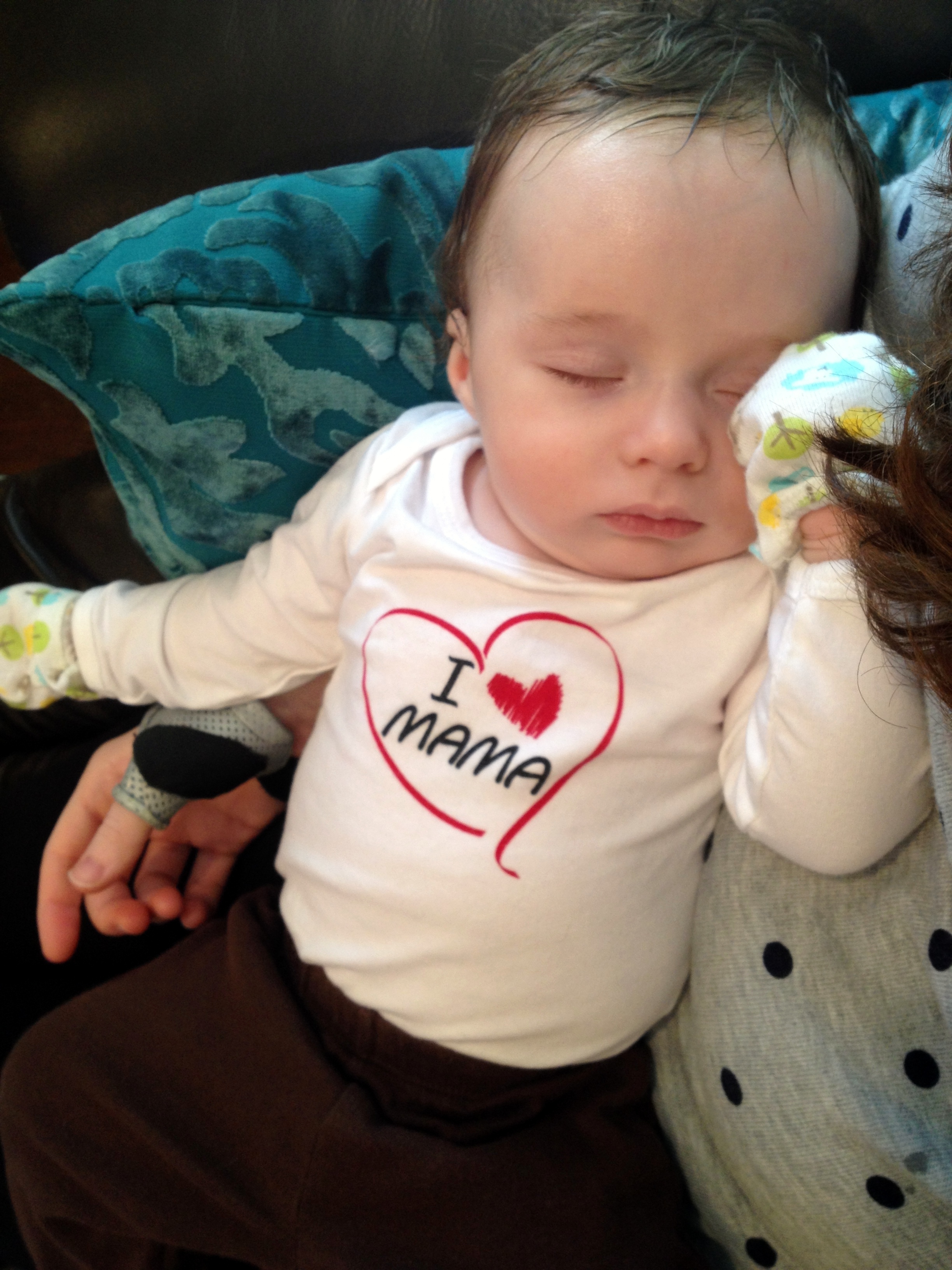
It’s hard to put into words how simultaneously joyful, exhausting, transcendent, stressful, surreal, and miraculous the first few months home with an infant can be. Now that I’m emerging from the fog but the experience is still fresh in my mind, I’d love to share some tips and strategies that helped me adjust to parenthood* over the last five and a half months.
While pregnant, I found countless resources for how to care for a newborn, from feeding to sleeping to swaddling to safety. However, there were less resources available for how to care for myself and other primary caregivers in the newborn days. Thus, I will focus on these strategies as they are not as adequately covered elsewhere. For additional tips from myself as well as other moms, check out my newest project Arthritis Life.
Caring for the Caregiver(s)

Many countries have postpartum practices that allow at least the mother to rest and recuperate in the early weeks after delivery (if not extended paid maternity and paternity leave). Since the United States is sorely lacking in this regard, I would strongly urge all new and prospective parents here to prepare just as thoroughly for how they will take care of themselves as how they will take care of baby in the postpartum period.
Here’s the hard thing to understand about the first months home with an infant before you experience it: everything that has to get done is not objectively very hard to do for a short period of time. The difficulty arises from the sheer volume and pace at which you must complete tasks, which are presented to you in a completely erratic and unpredictable order, without adequate rest and while your body is still recovering from delivery (phew!).
You might have heard the phrase, “Put your oxygen mask on first” with respect to airplane safety. Looking back, I know that I was simply much better poised to take care of Charlie’s basic needs when my needs were met to the extent they reasonably could be. Here are the strategies that worked best for our family.
Prioritize Sleep (Which Likely will Involve Getting Help)

If you do nothing else, set up systems that will allow the primary caregivers to get some uninterrupted sleep. You would never expect someone to simply push through extended periods without food, yet many feel they should be able to power through chronic sleeplessness after the birth of a child. This is simply not physiologically or psychologically healthy for most people (aside from a lucky few).
Recent studies have found that sleep deprivation is correlated with reduced cognitive functioning and such adverse physiological effects as reduced endocrine and metabolic function. Psychologically, some studies have found that fragmented maternal sleep is correlated with increased depressive symptoms, and sleep deprivation is generally associated with more negative mood states. Interestingly, another recent study found that postpartum sleep deprivation and fatigue appear to affect both primary caregivers similarly, thus it would behoove the family to take means to protect the sleep of all primary caregivers.
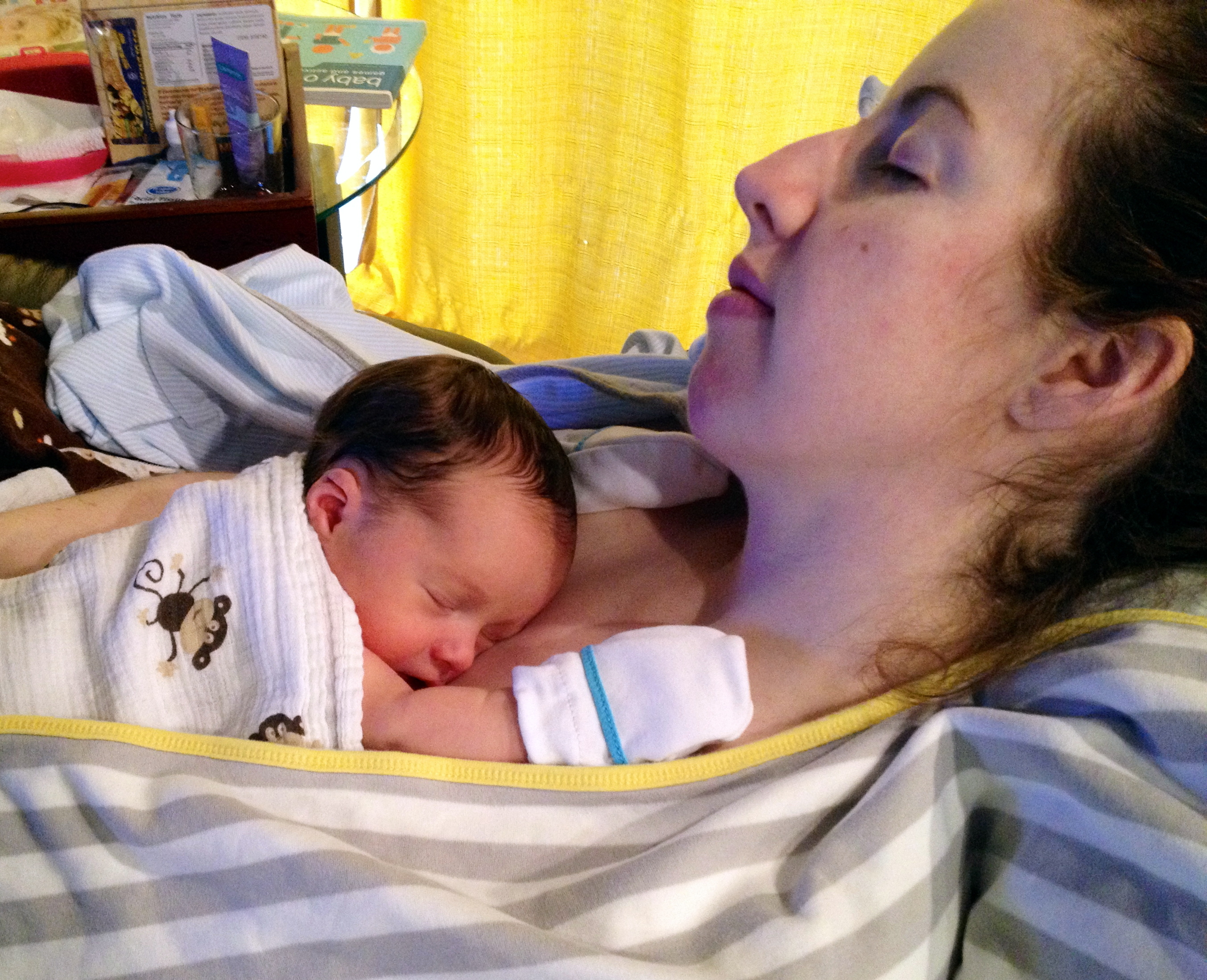
I anticipated that sleep deprivation would be the most challenging aspect of the first 3 months home with an infant, and it was. I had prioritized sleep long before I knew the link between restorative sleep and reduction of rheumatoid arthritis and other autoimmune disease activity, and my main plan was to “sleep when the baby sleeps.” However, this was not consistently possible due to adult and infant circadian rhythms being so different, an infant’s need to feed every 1-3 hours, all the time it takes to soothe the baby to sleep, the fact that infants are often noisy sleepers, and some additional breastfeeding complications which required that I wake up regularly to feed the baby or pump breast milk.
So, what specifically can one do to cope with the lack of consistent sleep? My best advice is to maximize your sleep opportunities. Here are six strategies that helped me:
1) Have someone take the baby away from you in between feedings and rock/lull them sleep and take care of other essential tasks.
This was the single most helpful thing anyone did for me in the 4-6 weeks after Charlie was born. When you arrange this, I strongly urge you to follow the American Academy of Pediatricians’ recommendation to ensure all caregivers who will come into close contact with an infant be up to date on their TDAP (whooping cough and tetanus) and flu vaccines, as these can be fatal for infants.
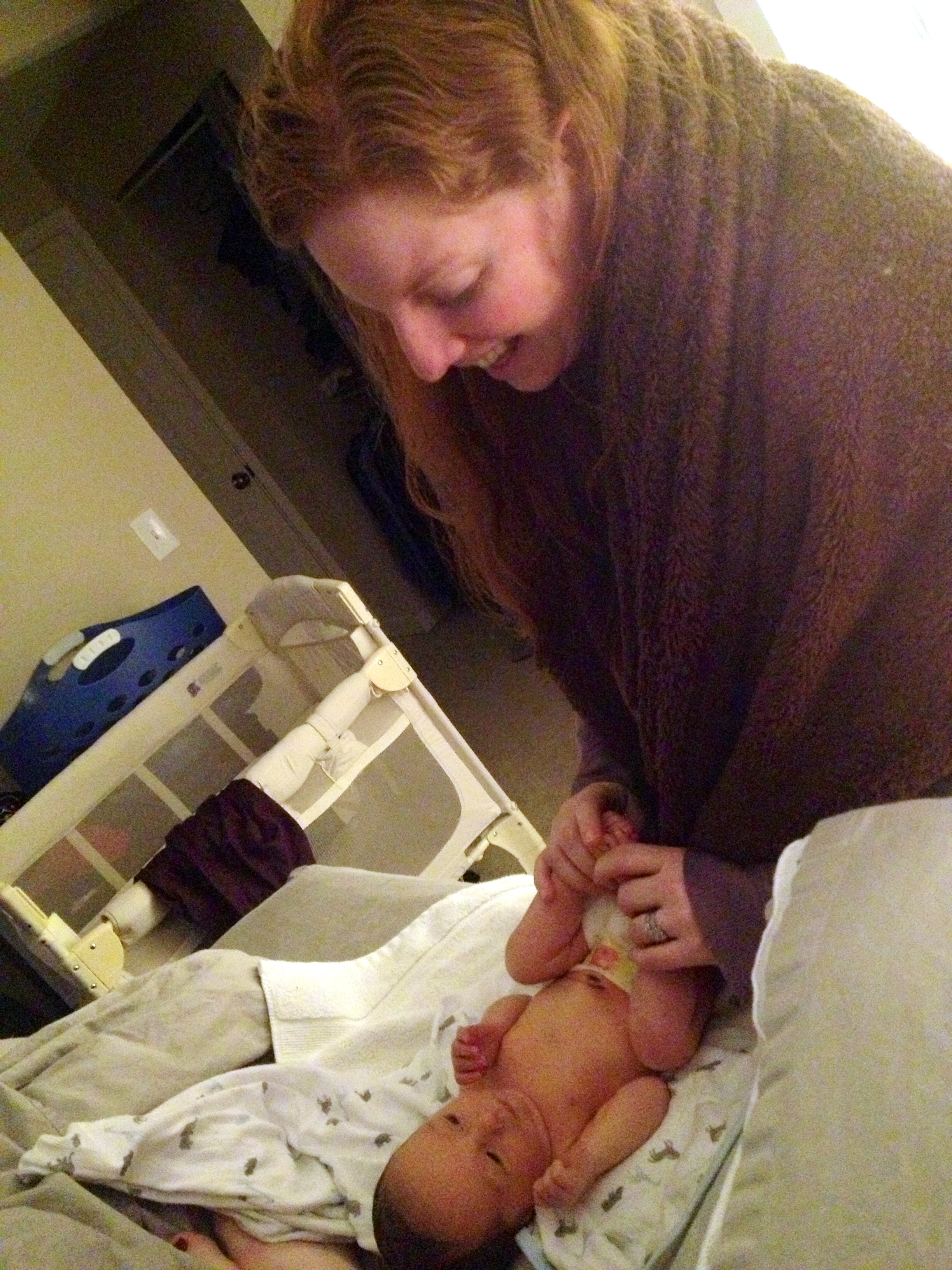
I was exceedingly lucky to have support from my husband and extended family. For those who don’t have family or friends who are willing to help in this way, consider hiring a post-partum doula or a nanny/babysitter. It might seem strange to spend money on this so early in the child’s life, but sleep deprivation takes a real physical and mental toll on most people and you will be better poised to meet the demands of new parenthood if your basic needs are being met.
If people offer to help who might not feel capable of taking care of the infant, you can also have them sign up to perform household tasks via a website such as LostaHelpingHands. This will give you more opportunities to sleep when you otherwise would have been doing chores.
2) Set “sleep hours” and only allow yourself naps between those hours.
This is something I simply learned through trial and error. When I tried to nap around the clock, I often ended up in a frustrating position where I often could not sleep when the opportunity presented itself. My circadian rhythm dictated that I receive sleep within a certain time frame it was accustomed to, so giving myself “sleep hours” was a nice compromise that afforded naps yet prevented me from getting so off schedule that I could not sleep even when I had the opportunity to do so. It also had a huge psychological benefit by giving me a sense of routine. My ideal sleep hours were between 7pm and 11am, but I suggest that you play around with it and determine what works best for your body’s rhythm.
3) Try to get at least one 3 hour chunk of sleep per day.
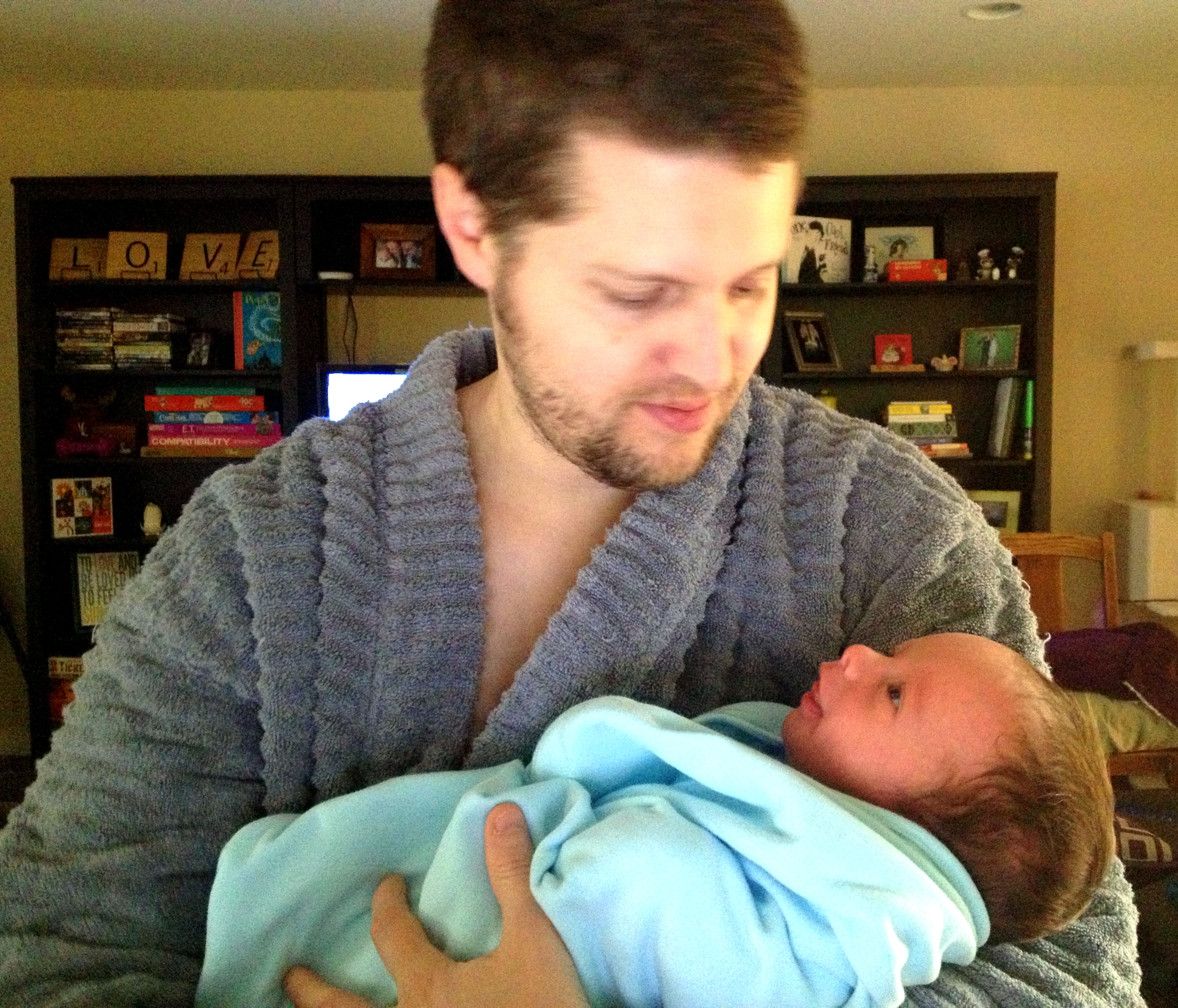
Since adult REM cycles are around 90 minutes, I found that my quality of life improved substantially when I was able to get three hours of sleep in a row (ideally twice a day, but at minimum once a day). After my husband went back to work, he would watch Charlie from approximately 7-10pm while I slept. It became very psychologically and emotionally important for me to know that this sleep opportunity would present itself each day.
4) Avoid “screen time” before going to sleep.
It was so tempting to check Facebook before going to sleep, despite my profound exhaustion. While it was important for me to feel socially connected during such a disorienting time in my life, I found more success when I followed the recommendations of recent research which shows that exposure to LCD screens can decrease melatonin up to 22%.
5) Approach your sleep time as “rest time” to take the pressure off.
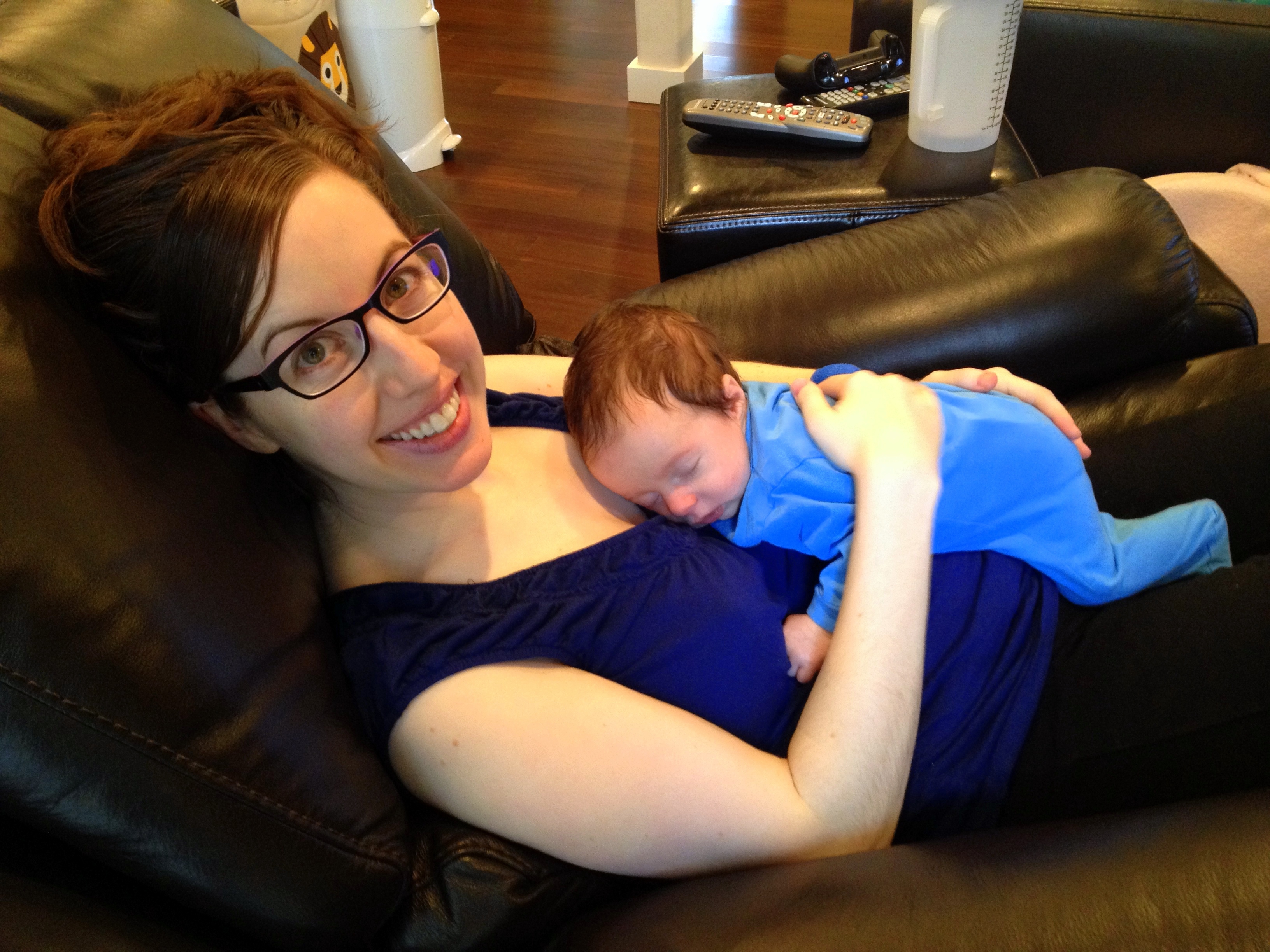
After a couple weeks of sleeplessness, I started becoming panicky about maximizing each of my sleep opportunities. This anxiety of course worked against me, as it made it harder for me to fall asleep. My husband suggested taking the pressure off by viewing my sleep opportunities as “rest” opportunities, which helped immensely. It was important to just close my eyes and get a break, whether or not I could actually sleep during that time.
6) Be flexible, and understand the relationship between infant feeding decisions and caregiver sleep.
Decisions about how to feed your infant are inextricably linked to the mother’s potential to obtain consecutive hours of sleep. If you choose to breastfeed exclusively from the breast (as opposed to providing pumped breast milk), your sleep potential will logically be reduced as compared to exclusively formula feeding, or “combo feeding” (which includes combining breastfeeding, pumping and/or formula feeding), assuming you have some help available.
As with most parenting decisions, feeding decisions don’t exist in a vacuum and what might be best for one entity might not be best for another. Only you and your family can decide what is right for you. It took some trial and error for us to settle on a solution that provided best for both Charlie’s and my health and wellbeing.
Employ Pain Management & Prevention strategies
After the birth of a child, the mother’s will likely experience some pain during the recovery process. The most helpful physical and pain management strategies for me were:
1) Stay “on top of your pain”
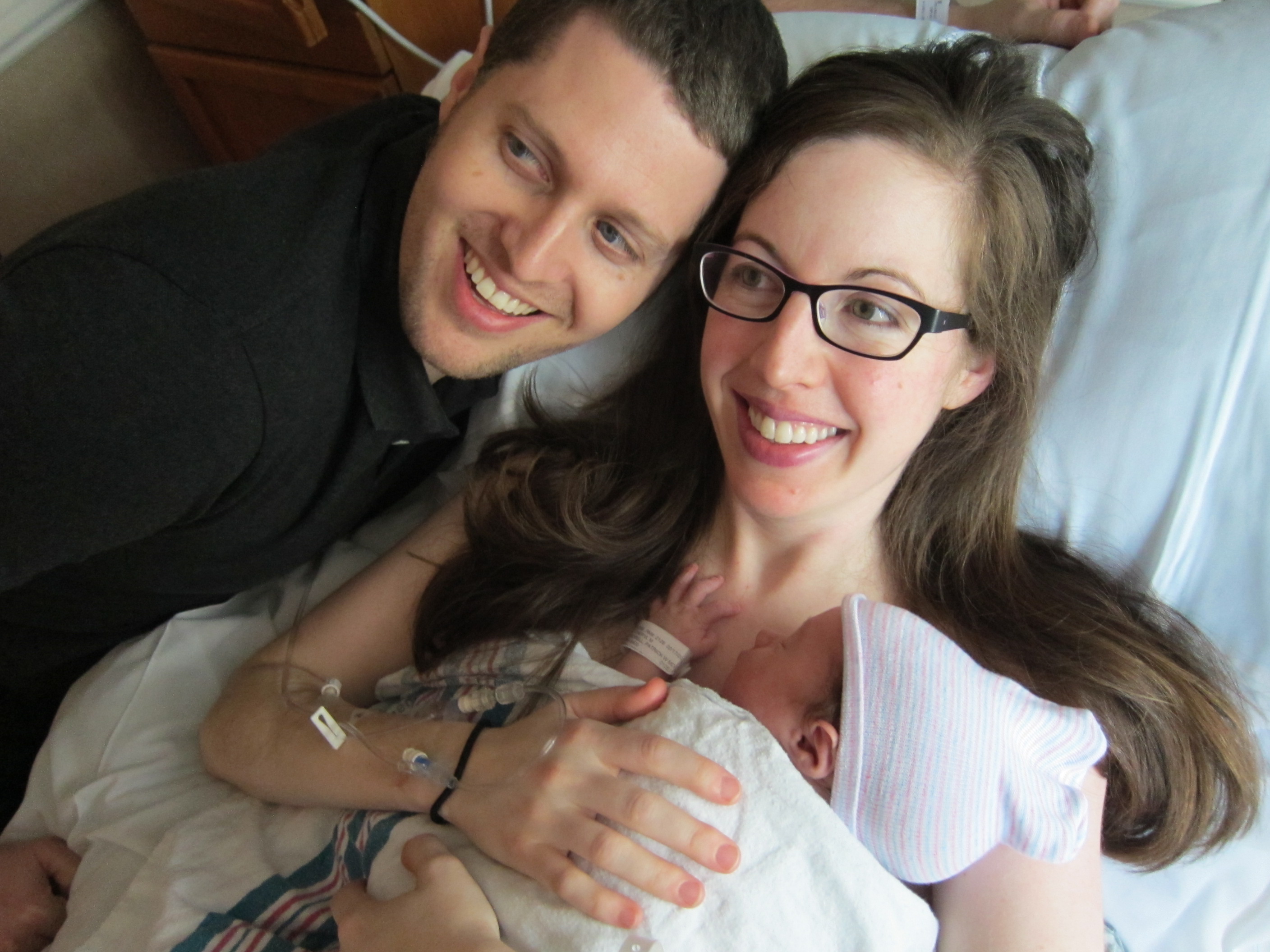
Employ pain management strategies before you are in dire need of them. As always, consult your doctor for all medication related decisions. I found that I was much better poised to take care of myself and Charlie when I took my pain medication on a regular schedule (especially during the first week) rather than waiting until the pain was unbearable.
I also used non-medicinal pain management strategies such as deep breathing, icing, distraction and a belly wrap (which was particularly helpful while moving from sitting to standing). If you cannot take pain medications or prefer not to, I would strongly recommend preparing non-pharmacological tools and strategies prior to delivery, as you may be too overwhelmed to sort through them later. The American Academy of Pain Medicine has some good resources for learning more about pain and even has a video on non medicinal strategies for combating pain.
2) Understand proper body mechanics when doing basic movements
It’s important to use proper body mechanics when moving from laying down to sitting up at the edge of the bed, going from sitting to standing (in bed or from a chair), and going up stairs. As an occupational therapist, I’m a huge advocate for this! Knowing the most efficient way to perform basic movements will help prevent unnecessary pain and strain to your abdomen and pelvic region. Kaiser has a great handout with tips here.
3) Don’t be afraid to ask for help.
It’s better to have extra help when getting out of bed than to realize you need help in the middle of a movement and risk falling due to pain!
Toileting: Prepare for bumps in the road ahead of time
Going to the bathroom is just one of those daily life tasks that one can’t simply put off postpartum. Here are some things to think about ahead of time:
1) How will you get to the toilet?
Do you have stairs in your house? They might be difficult to climb for the first few days/weeks regardless of how you delivered. There is no shame in getting a “bedside commode” to use as a temporary toilet if you find it difficult to safely get to yours.
2) How will you manage (probable) constipation?
It’s not the most glamorous of postpartum topics, but constipation is very common postpartum (especially for those who delivered via C section). If you prevent constipation, you are less likely to have hemorrhoids and will avoid additional pain from straining. Stool softeners and prune juice are effective for many new moms (as well as expecting mothers).
I was proactive in preventing constipation the week before my C-section to give myself the best chance of avoiding constipation and I was pleasantly surprised that this strategy paid off! It may feel awkward to think about toilet topics now, but trust me, pretty soon your daily life will involve a lot of bodily functions (on the part of your child if not yourself) so it’s best to get used to it now. I urge you to do anything you can do make your postpartum life easier on yourself so you can focus on your precious new one!
3) Post-Delivery Healing:
Educate yourself prior to delivery on things you can do to help minimize pain and maximize healing in your pelvic region. Your healthcare team should also provide specific recommendations for scar/incision management, preventing infections, and more. It can be easy to overlook these recommendations when you are probably more excited to care for the new baby, but in the long run you likely won’t regret putting extra care into your own physical healing.
Prepare easy to eat (preferably one-handed) snacks/meals and drinks ahead of time
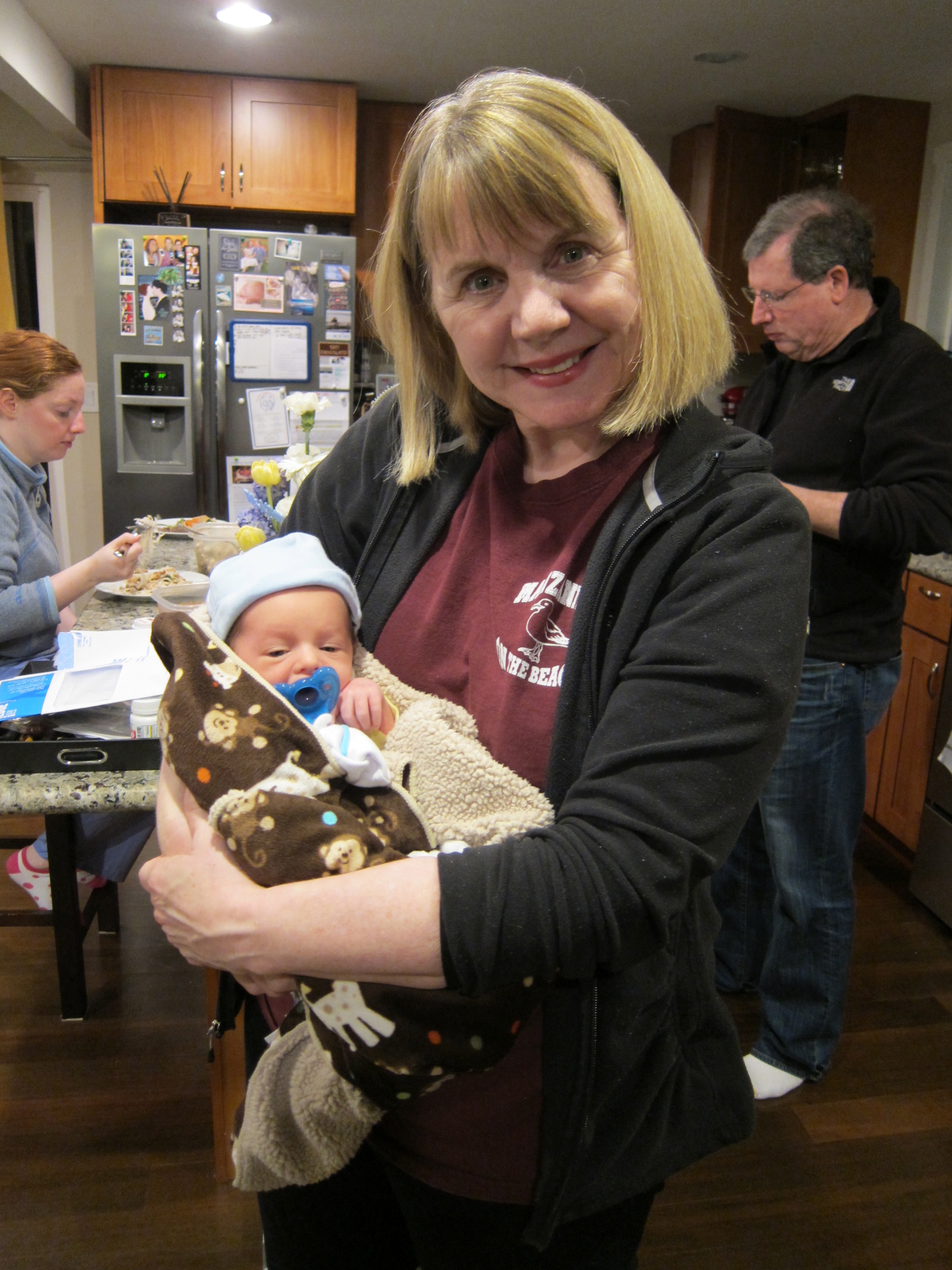
New moms are often encouraged to prepare food prior to baby’s delivery, particularly if they are feeling in the “nesting” spirit. In addition to the classic freezer meals, I would recommend making sure you have plenty of meals and snacks that you can easily eat one handed. Your hands will often be full with feeding, soothing, changing diapers or just holding your precious baby as they sleep, so one handed meals/snacks are crucial.
Additionally, always accept anyone’s offer to bring you food (you can even use a site such as MealBaby to organize meals).
Some of my favorite postpartum meals and snacks included:
- Caveman, Zing, Kind or other similar “power” bars that have a good mix of protein, fat and carbohydrates, and/or trail mix.
- Burritos and “wrap” sandwiches Pro tip: wrap them in a ziplock baggie and hold the burrito or sandwich by the bottom of the bag and slowly peel it back as you eat it, to avoid messes and also keep your hands clean.
- Smoothies- You can never go wrong with a smoothie, especially one with lots of protein.
- A water bottle with a handle and a long straw. This is absolutely crucial – the handle allows you to grab it one handed, and the straw allows you to drink while also nursing or otherwise holding your child. I can’t find a link to one with the same length of straw as the one I received at the hospital but this one looks promising.
- Grocery delivery: See if any grocery stores nearby offer home delivery. For example, Safeway has promotions where your first delivery is free, and they offer discounts if you are flexible about the delivery time. Alternately, ask a visiting friend to pick up necessary items on their way over for a visit.
Prepare Your Home Environment to Make Life Easier
Before the baby comes, assess your home environment and see if there are any opportunities where you could make life easier for yourself. Here are a few things that helped us (in addition to the toileting and meal preparation suggestions mentioned earlier):
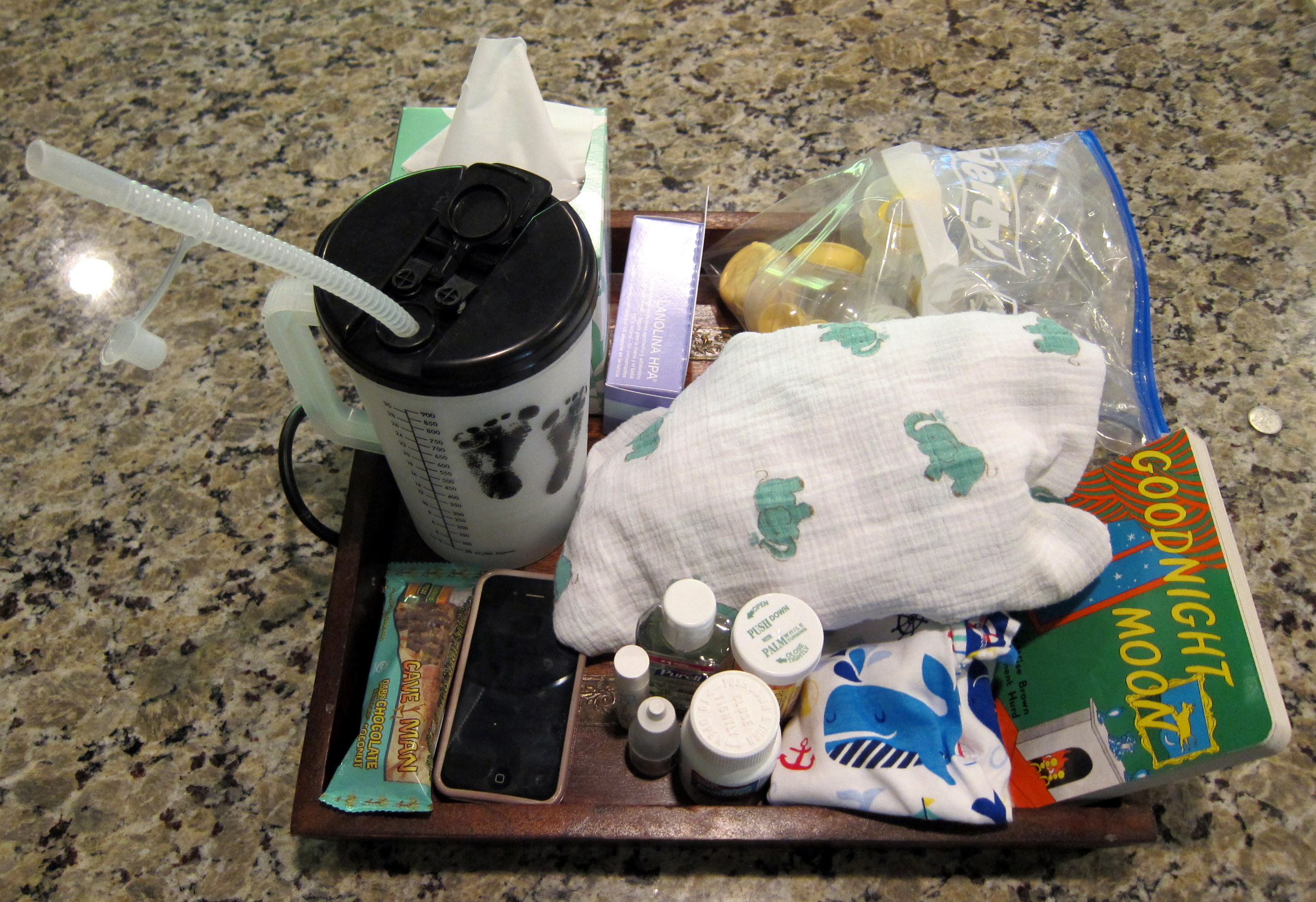
1) Use a tray or other container for all the “stuff” mom will need.
Before I confined all my necessary items to a tray within arm’s reach, I found I was constantly asking people to hand me things, from chapstick to power bars to my water bottle. Put everything on a tray and bring it wherever you will be sitting to avoid unnecessary frustration. Here are items I had on my tray:
- Water Bottle
- Phone (and separate camera if needed)
- Hand Sanitizer and moisturizer
- Chapstick, Eye Drops, tissues
- Protein Bar and other snacks
- Feeding baby items (nipple cream, pads, bottles, etc)
- Baby items (swaddle blanket, burp cloth, extra clothes)
- Pain medications and other medications as needed
- Chargers for phone and other electronics if needed (e-reader, breast pump, etc).
- Something for FUN, in my case a board book. I was surprised at how early Charlie could sustain attention to a book, and reading to him was fun for me too!
2) Consider having baby care “stations” on each level of your house.
We had a changing table (with diapers, wipes, extra clothes, etc) and sleeping areas for the baby upstairs in his nursery as well as downstairs in our main living area. The “Pack ‘n Play” worked well for us as it can serve as a changing station as well as a crib. The closer things are to arm’s reach, the easier your life will be in the early days!
3) Have a back up communication plan.
Many will plan on using cell phones to communicate, but I would urge you to find a back-up plan or purchase something that will allow you to keep your cell phone attached to your person (such as an arm band or even a fanny pack!). Why do I give such an oddly specific piece of advice? Well, the day I got home from the hospital (2 days after Charlie’s birth) I dropped my phone onto the floor and couldn’t get out of bed independently. I couldn’t easily get the attention of my husband and sister, who were downstairs taking care of the baby. Fortunately, they came upstairs to check on me not too long afterwards, but it was fairly distressing to feel that I needed help and couldn’t communicate.
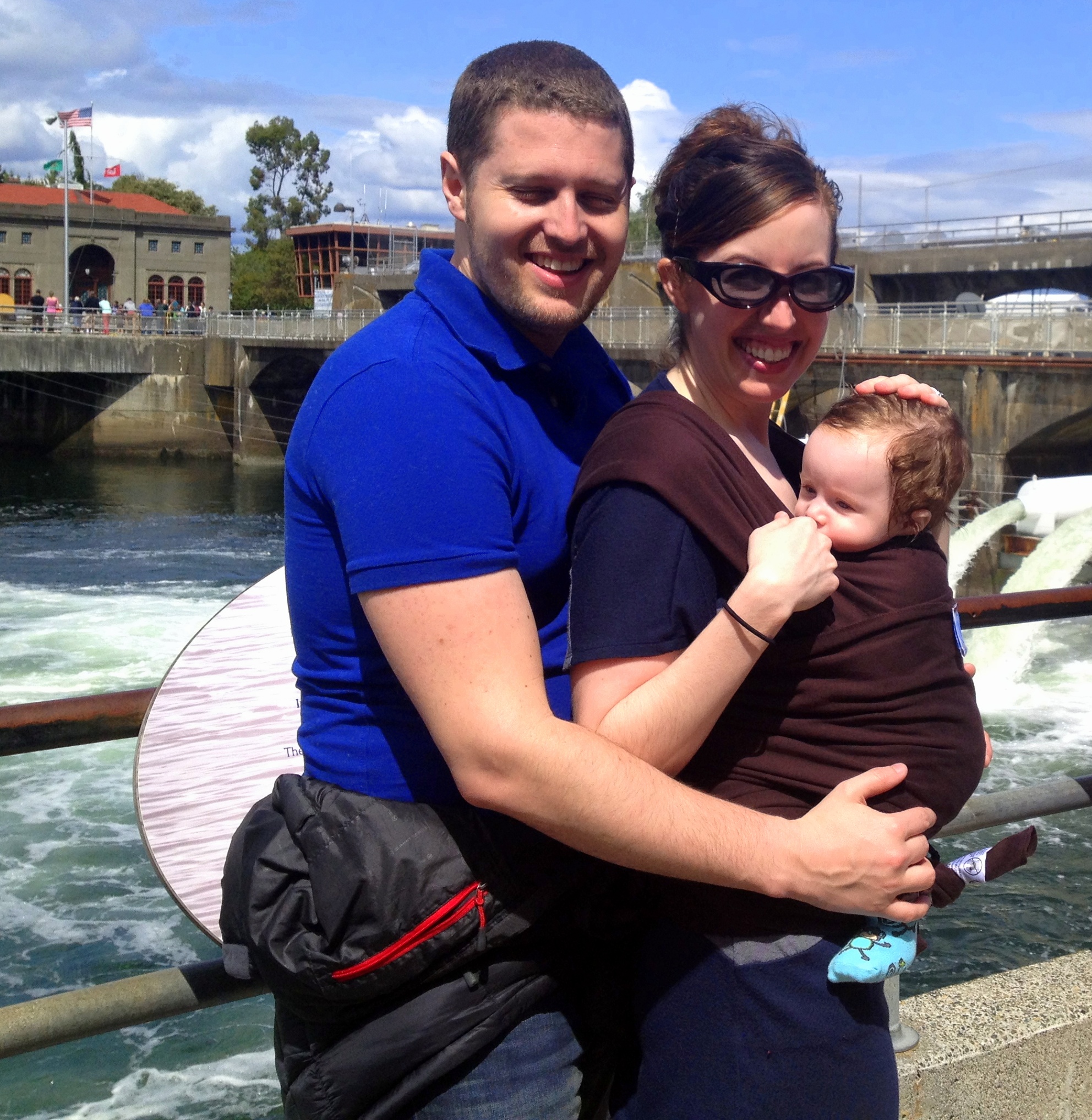
4) Consider “baby wearing.”
This is more relevant for the later early days when you are more mobile. I found that wearing Charlie in a Moby wrap (the benefits of which are explained in detail here by MamaOT) took some strain off my arms. It also allowed me to complete tasks in a somewhat hands free fashion. We’ve gone through some trial and error to find baby carriers that work for Charlie; right now we mostly use the Ergo but also the Pikkolo and sometimes Moby (but he’s getting pretty big for it now!).
Psychological Tip: Be Gentle on Yourself & Find Support

Contrary to Maslow’s Hierarchy of Needs, I believe that even when your basic physiological needs (food and sleep) are not adequately covered, you still have a desire for higher social and emotional needs to be met. You will likely have lots of hopes and dreams about parenthood, and many of them may come true…at some point, but probably not in the first few weeks home with an infant. The newborn stage is difficult for most new parents, regardless of the degree to which they remember it (and despite their beseechings that new parents “enjoy every second!“). Be gentle on yourself during this transition.
It helped me to think of the first 3 months postpartum as the “fourth trimester” (as argued by Gary Karp in the “Happiest Baby on the Block”). The baby developmentally still wants to be in the womb in many ways and will not be as interactive or responsive initially as they will be by around 12 weeks (or earlier!). Try to be as patient as possible and perhaps lower your expectations for the early days. Many new parents refer to the first few months as “survival mode,” a concept I found useful.
I would also recommend finding some sort of structured support. Here are some resources I found helpful on my journey:
-

My little love, at 3 months. If you are struggling mentally with depression or anxiety, I would strongly encourage you to seek out care from a clinical psychologist.
- I ended up waiting until after Charlie was a year old to get professional help, and it has been one of the best things I have ever done for myself and my relationships across the board. This article has a beautiful breakdown of the difference between “normal” postpartum adjustment difficulties and those that require help, but at the end of the day, I would advise you just trust your gut. Do you think you would benefit from help from someone who has extensively studied these issues and knows evidence-based strategies to address them? If so, why not give it a try? I was pleased to find that my insurance covered it at a very manageable rate, but had it not, it still would have been worth cutting every possible corner in order to receive this priceless service.
- Your local hospital and/or community college will likely offer “parent-baby” education and support groups. Evergreen Hospital in Kirkland (where I delivered) has a series of parent-baby groups and the 0-3 month ones are all free. They also have standalone classes on topics such as the postpartum psychological adjustment (I love the title: “This is Not What I Expected“). Honestly, it was very therapeutic for me to just sit in a room full of other parents going through similar stages with their little ones.
- If you live in the greater Seattle area, the PEPS – Program for Early Parent Support is a great source of in person support. Parents who live near each other and delivered around the same time are grouped together. More experienced parents lead the groups and mentor them through the new baby stage formally once a week for 3-4 months, and many groups continue to meet after that.
- I also enjoyed being part of social media groups (many of which are private). There are many general mom or parenting groups as well as groups specific to different topics such as breastfeeding, formula feeding, and different parenting styles or approaches. With the benefit of hindsight, I would say that while I benefitted greatly from those groups, I also benefitted from eventually limiting my interaction on them, as at times the questions or topics discussed were anxiety-provoking for me.
Concluding thoughts about taking care of yourself
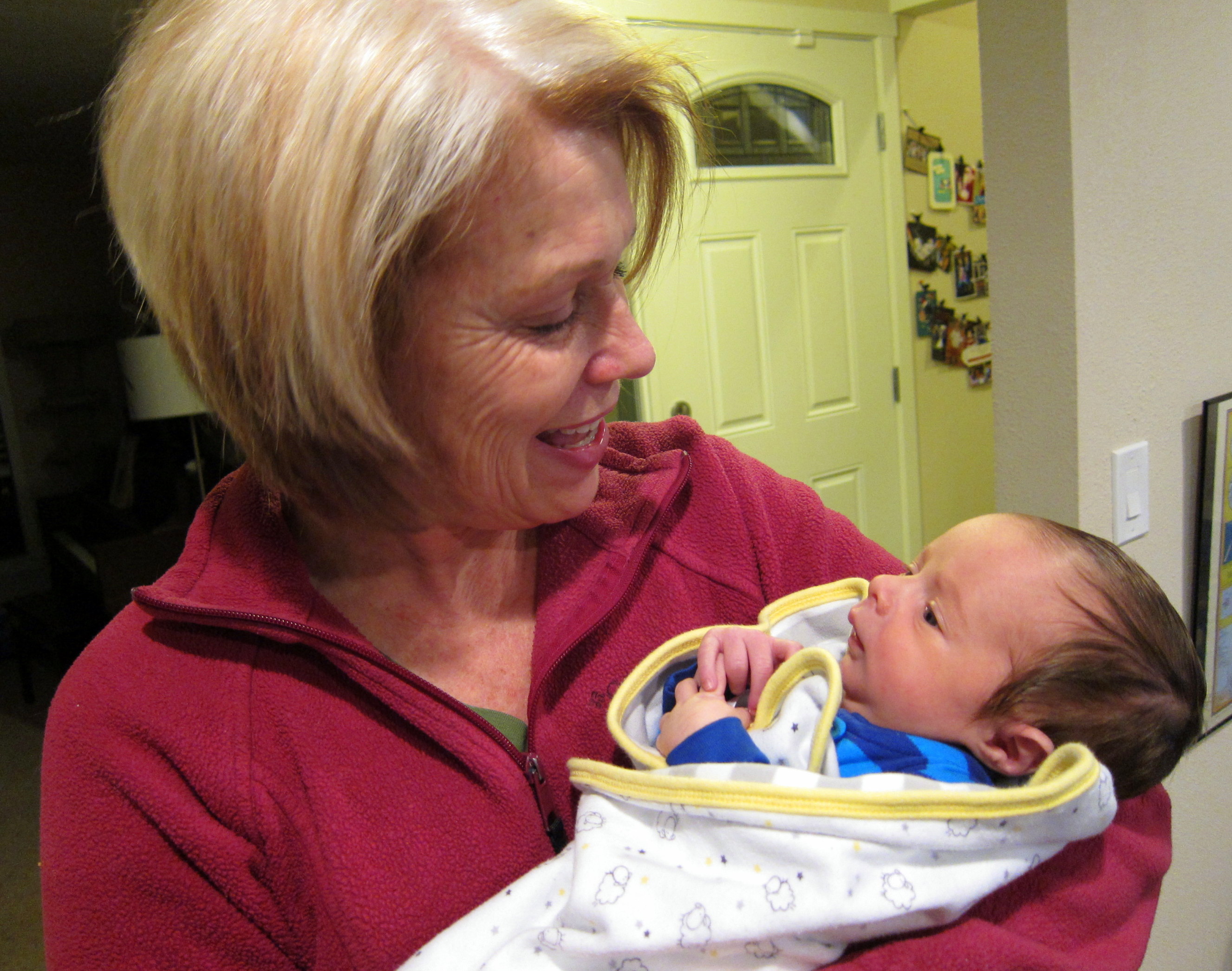
Becoming a parent is a gift that is awe-inspiring in a global sense yet frequently messy/complicated during one’s minute-by-minute lived reality. I mention challenges such as sleep deprivation and pain not to dwell on them, but to provide ways to navigate them so you will be better poised to appreciate the gifts of the early days.
The pressure on modern American mothers to “have it all” has been exhaustingly well documented elsewhere, so I will simply just suggest that you not attempt to do it all, immediately after having a baby. Get help, or if nothing else, prepare for how you will take care of yourself alongside the baby in the early days.
I hope these tips are helpful and would love to hear more from you in the comments section!
*I recognize that new parenthood takes many shapes and forms, from adoption to single motherhood to a same sex married couple to my situation. I have focused on tips for my situation (heterosexual married couple, biological parents) because it’s the only one I know and feel I can speak to.
No Comments
Anne
Hi Cheryl,
I stumbled across your blog while searching for postiive RA stories. I haven’t been diagnosed (yet…?), but I’m currently seeing podiatrist and rheumatologist to sort some things out. Esentially abnomal x-ray on previously broken toe and postive bloodwork for rheumatoid factor and anti-CCP. I feel normal, which is the strange part, and am active, and I have been terrified of what this diagnosis could mean. I joined a FB support group and started googling the heck out of RA- big mistake. Your blog is very informational and helpful. I love all the practical tips. It’s very inspirational to see someone who is doing well! I have 3 children who are 6 and under and I need to find practical ways to cope and live my life if this is what is in store for me. Thank you!!
Cheryl Crow
Hello – Thank you so much for sharing your story and getting in touch. An important thing to remember is that most autoimmune diseases have a spectrum of possible effects; you can have mild, moderate or severe forms of the disease, and sometimes what starts as severe can end up more mild in the future or vice versa. It is easy to be terrified by the stories of more severe experiences, but in reality it is very hard to know what your experience will be before you have it. I try to remind myself that everything is temporary, which helps manage anxiety a bit! I’m glad you find my posts helpful. I was in medicated remission for a while, which meant that I truly didn’t have to change the way I did things in order to prevent pain, but for the last 5 years or so I have had mild to moderate joint pain (particularly after the birth of my child) so I have had to get more creative with things 🙂 Please let me know if you have any specific areas you’d like me to share about and keep me posted on your journey!
Pingback:
Rachael
I’m curious as to how your RA is doing after the birth of your baby? I see you are breastfeeding are you on RA meds now? I ask bc I am 4 months preggo and do not have an RA dx yet but feel it may come in the near future. I am seeing both a rheumy and lyme doc right now .long story but my joint pain in fingers and toes continues so far throughout the pregnancy boo. Anyway I would love to breastfeed and wonder how all that is playing out for you?
Cheryl Crow
Hi Rachael! I wish you well on your diagnosis journey, that is sometimes the hardest part. My pregnancy went VERY well (RA basically in remission) and there were a lot of bumps in the road post-partum but we’re on the right track now. Breastfeeding is possible on many of the RA drugs out there, and I was able to do so for a while but then had to switch to formula due to chronic mastitis, which was more likely to occur due to my RA meds (which make me more suceptible to infection) but could have occurred even without the RA meds. I would definitely discuss it ahead of time with your care team and plan for contingencies if breastfeeding doesn’t work out (I would give this advice to anyone actually, even if they didn’t have an autoimmune disease). I hope it all goes fabulously for you, let me know if you have any more questions!
naricspotlight
Hello! Great post! As an OT and a parent with a disability, you may be interested in this survey from Through the Looking Glass. They’re interested in baby-care and child-care equipment that parents and grandparents with disabilities have found helpful: http://www.lookingglass.org/services/national-services/1-latest-news/170-feedback-babycare-equipment Please spread the word! Thanks and mazel tov!